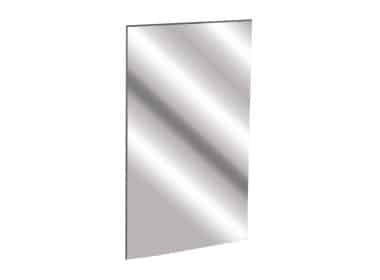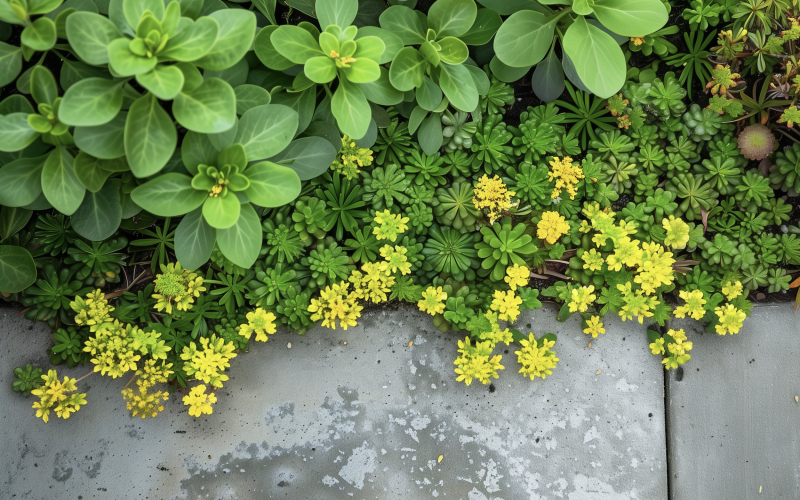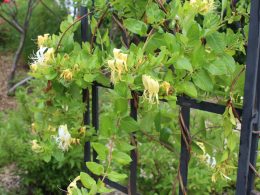Are you tired of constant weed battles in your garden? You’re not alone.
Many gardeners struggle with persistent weeds that seem to sprout overnight, ruining carefully planned backyard designs with gravel and other landscaping features.
But there’s hope! Ground covers can be your secret weapon in the fight against weeds.
These low-growing plants add beauty to your garden and act as living mulch, smothering weeds before they can take root.
This article explores the best ground covers for weed prevention, helping you create a lush, low-maintenance landscape.
From sun-loving sedums to shade-tolerant ajugas, we’ll cover a range of options suitable for various garden conditions.
Get ready to say goodbye to the wedding and hello to a more beautiful, carefree garden.
Best Ground Cover for Weed Prevention
1. Creeping Thyme
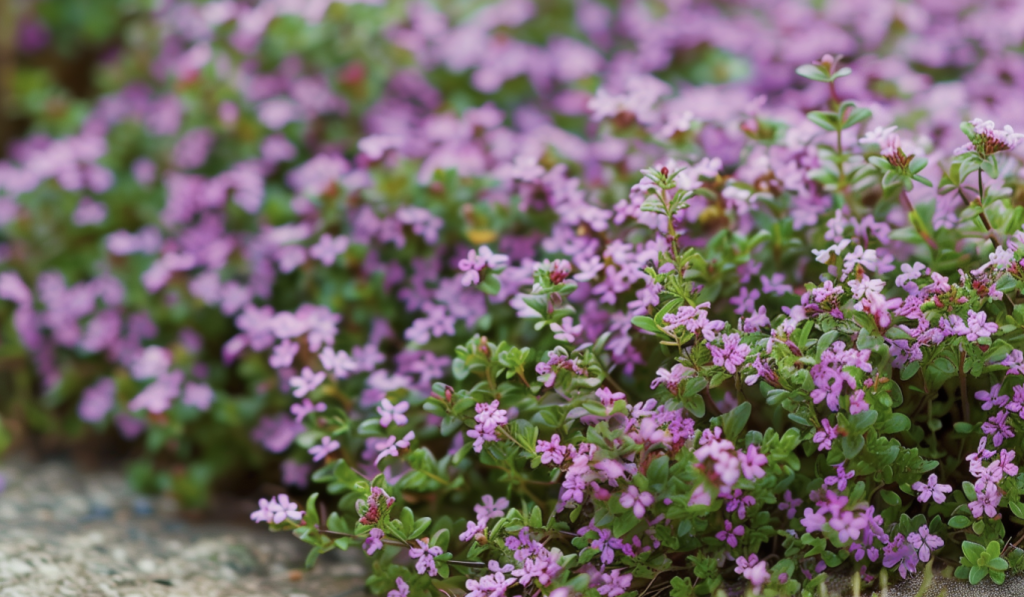
This low-growing plant forms a dense, mat-like growth that effectively suppresses weed development.
Its evergreen nature provides year-round coverage, while its fragrant foliage adds sensory appeal to your garden.
Creeping thyme can withstand light foot traffic, making it ideal for pathways or between stepping stones.
With a moderate growth rate, it’s easy to manage and won’t overtake your garden. For optimal growth, plant in full sun and well-draining soil.
2. Mazus

Mazus is a fast-spreading, low-growing plant that creates a dense carpet, ideal for preventing weed germination.
Its ability to handle foot traffic makes it perfect for high-traffic areas in your garden.
The plant produces vibrant flowers, adding visual interest while performing its weed-suppressing duties.
Mazus thrives in part sun to full shade with well-draining soil, making it versatile for various garden locations.
3. Bugleweed (Ajuga)

Bugleweed is highly effective at suppressing weeds by forming dense mats of evergreen foliage.
It produces attractive flower spikes that add color to your garden while maintaining its weed-prevention capabilities.
Bugleweed can tolerate foot traffic, making it suitable for areas with moderate activity.
Plant it in full sun to part shade in rich, well-draining soil for best results.
4. Lamb’s Ear (Stachys Byzantine)
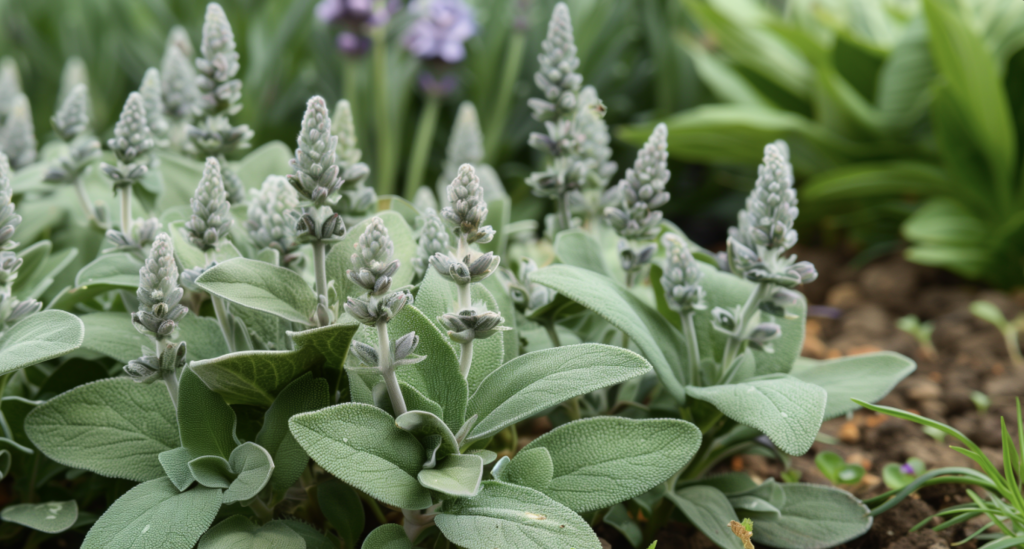
Lamb’s ear features dense, soft foliage, forming an effective barrier against weeds.
Its grayish-green leaves create an attractive contrast in the garden, complemented by lavender flower spikes in spring.
This plant thrives in full sun and loamy soil. Its drought tolerance makes it an excellent choice for low-maintenance landscapes.
5. Creeping Phlox (phlox Stolonifera)
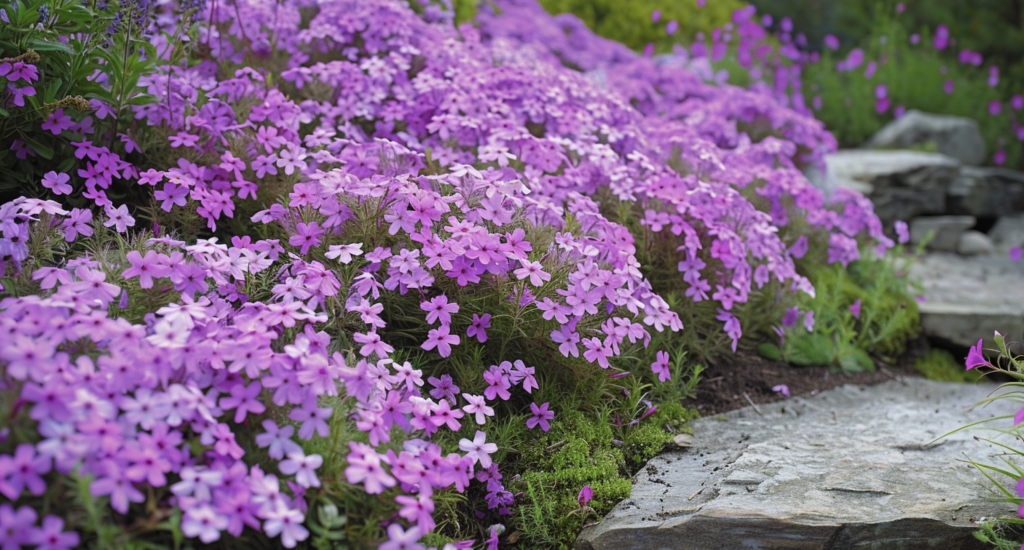
This ground cover forms a tight mass of leaves that effectively smothers weeds.
In spring, it bursts into a carpet of colorful flowers, ranging from white to pink and purple.
Creeping phlox prefers full sun and well-draining soil. Its ability to cascade over walls or slopes makes it versatile for various garden designs.
6. Yarrow (Achillea millefolium)
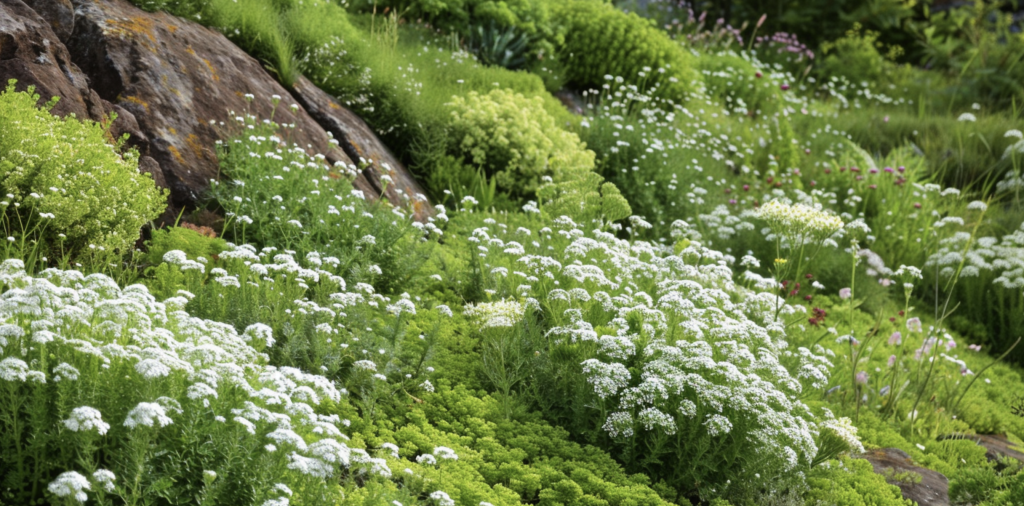
While taller than many ground covers, yarrow’s dense growth habit effectively suppresses weeds when planted in groups.
It produces flat-topped clusters of tiny flowers in various colors, adding visual interest to your garden.
Yarrow thrives in full sun and well-draining soil. Its drought tolerance and ability to attract pollinators make it a valuable addition to any garden focused on weed prevention.
Shade-Tolerant Ground Covers
Sweet Woodruff
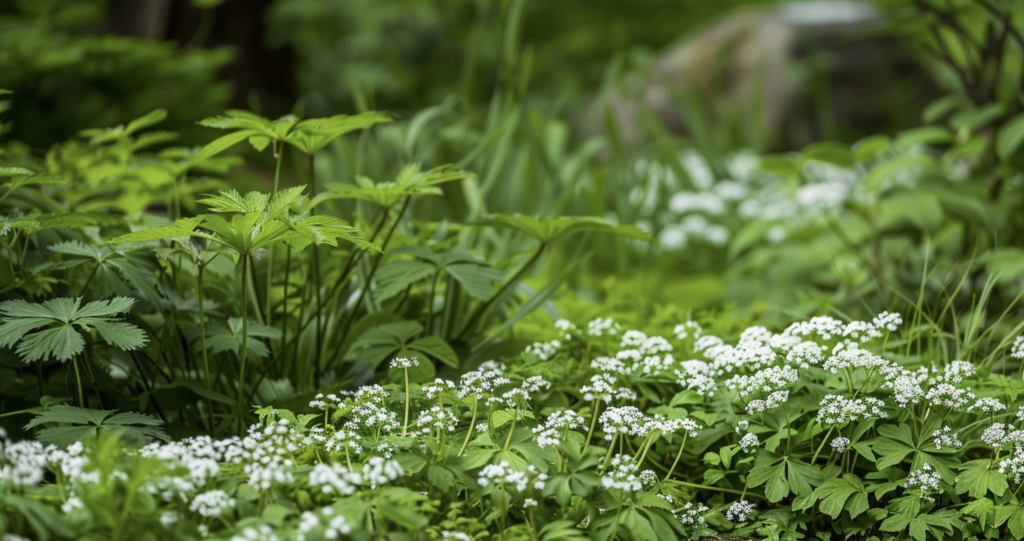
This quick-spreading plant is excellent for shady areas where other plants struggle.
It produces delicate white flowers and pleasant fragrances, making it a sensory delight.
Once established, it’s low-maintenance and requires minimal care. Plant it in full shade with loamy soil for optimal growth.
Green-and-Gold
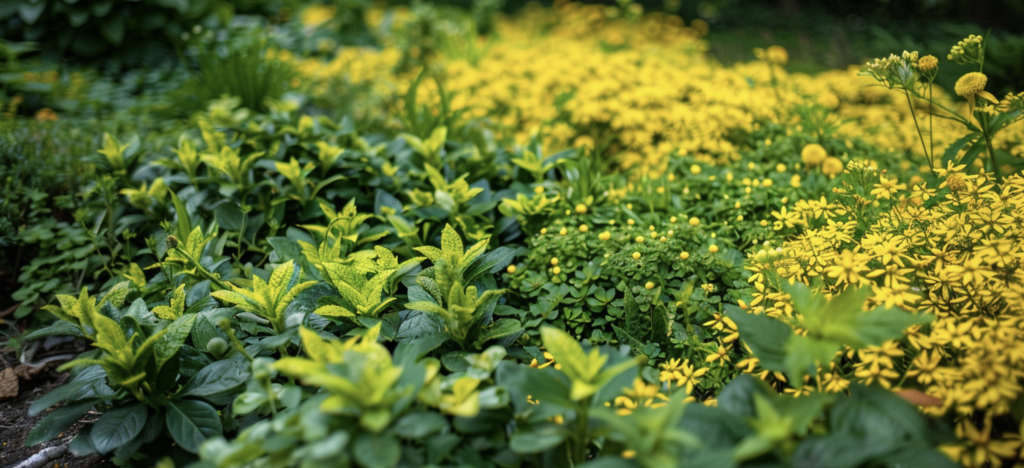
Ideal for shaded areas, green-and-gold spreads well and creates an effective weed barrier.
Its bright green leaves provide a lush backdrop for the cheerful yellow-orange flowers it produces.
This plant thrives in partial to full shade and prefers average, moist soil conditions.
Sun-Loving Ground Covers
Crimson Clover
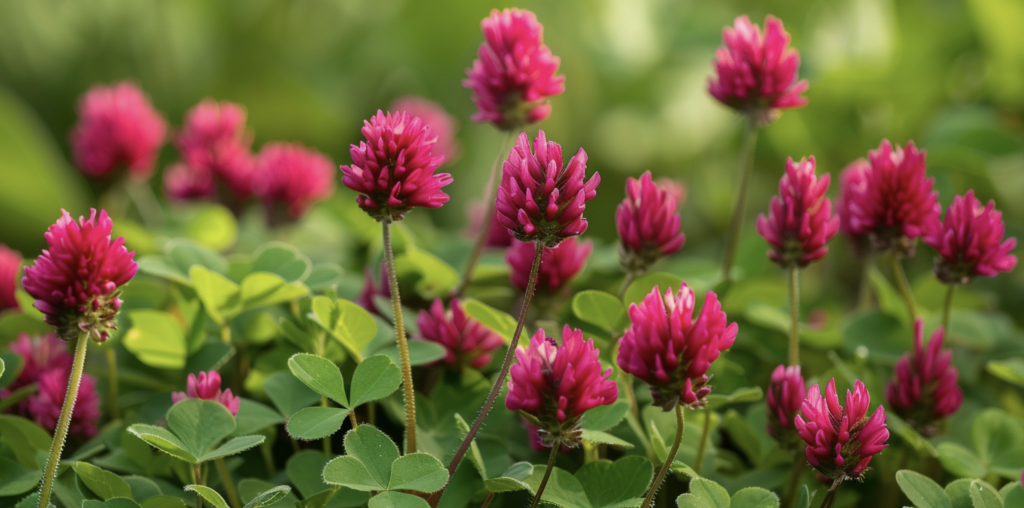
This fast-growing plant is excellent for preventing weeds in sunny spots.
Crimson clover suppresses weeds and improves soil quality, making it a dual-purpose ground cover.
Its vibrant flowers attract pollinators, enhancing your garden’s ecosystem. Plant in full sun; it adapts well to various soil conditions.
Sedum (Stonecrop)
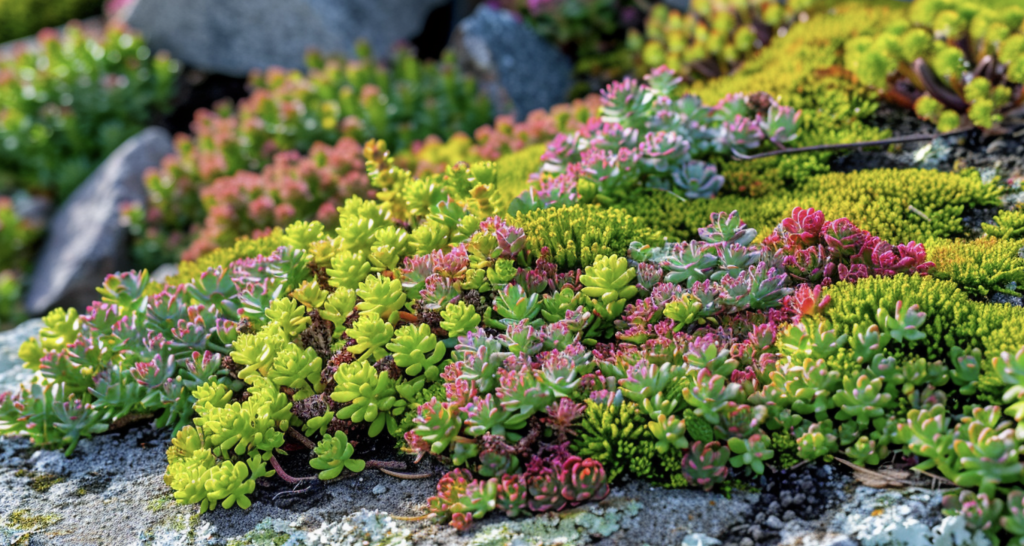
Sedum is a tough plant that tolerates heat, drought, and foot traffic, making it ideal for challenging sunny areas.
Its succulent leaves store water, allowing it to thrive in poor soil conditions where weeds often flourish.
Many sedum varieties produce colorful blooms, adding visual interest to your weed-prevention strategy.
Plant in full sun and well-draining, even poor, soil for best results.
Care and Maintenance of Ground Covers
1. Watering and Soil Requirements
Well-draining soil is crucial for the health of most ground covers. It prevents water logging, which can lead to root rot and other issues.
When planting, amend heavy clay soils with organic matter to improve drainage.
We maintain a regular watering schedule for established ground covers, especially during dry spells.
Water deeply but less frequently to encourage deep root growth, which enhances the plant’s ability to outcompete weeds.
2. Pruning and Thinning
Regular pruning and thinning help maintain the density and health of ground covers.
For most varieties, trim back after flowering to encourage new growth and prevent the center from becoming woody or bare.
Use clean, sharp shears to avoid damaging the plants.
Some fast-growing ground covers may need more frequent trimming to prevent them from encroaching on other garden areas.
Thinning out overcrowded sections improves air circulation, reducing the risk of fungal diseases.
3. Pest and Disease Management
Common pests for ground cover include aphids, spider mites, and slugs. Diseases may include root rot, powdery mildew, and leaf spot.
To manage these issues naturally, maintain good air circulation, avoid overwatering, and promptly remove any infected plant material.
Plant diverse species nearby to encourage beneficial insects. If used judiciously, neem oil or insecticidal soaps can effectively control pests.
Mixing baking soda and water can be an effective preventive spray for fungal issues.
Summing Up
Choosing the right ground cover is a game-changer for weed prevention in your garden.
From the dense mat-forming creeping thyme to the shade-loving sweet woodruff, these plants offer effective, natural solutions to keep weeds at bay.
Remember, matching the ground cover to your garden conditions is the key to success.
Whether dealing with sunny spots or shaded areas, there’s a perfect option waiting to transform your landscape.
These low-maintenance ground covers will reduce weed growth and enhance your garden’s beauty and biodiversity.
Ready to say goodbye to constant weeding? Take the next step and choose your ideal ground cover today.
Your future self will thank you as you enjoy a lush, weed-free garden that’s the envy of the neighborhood.




